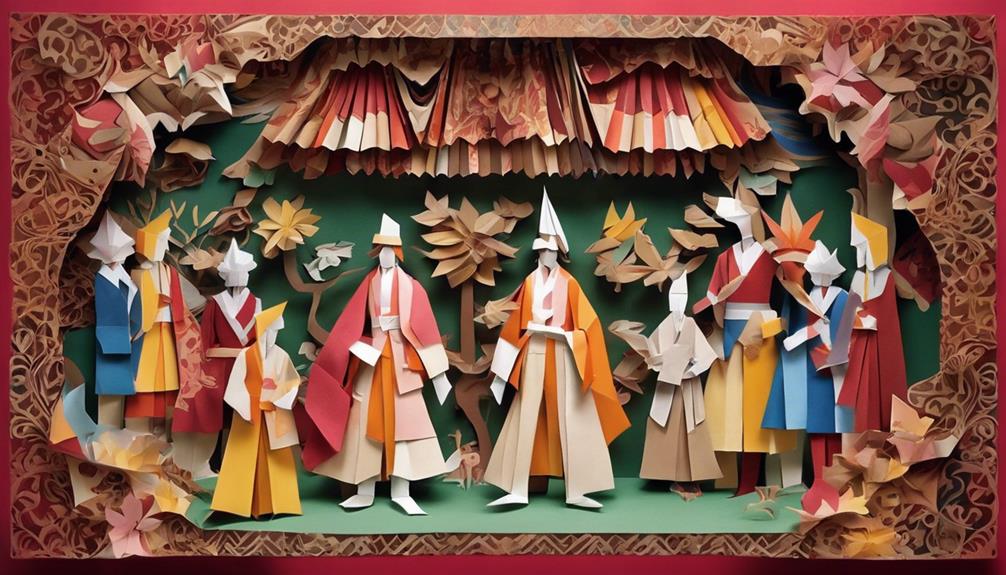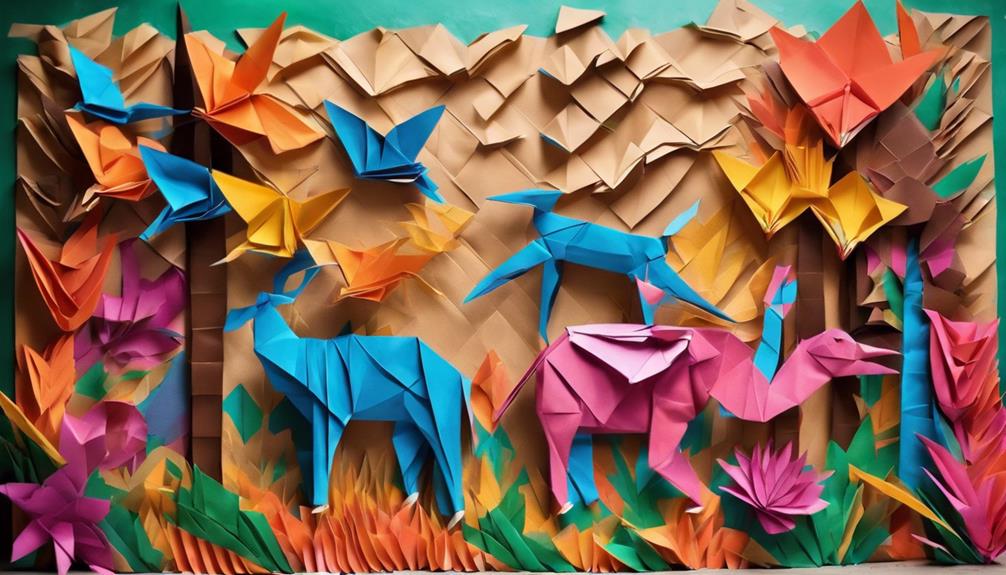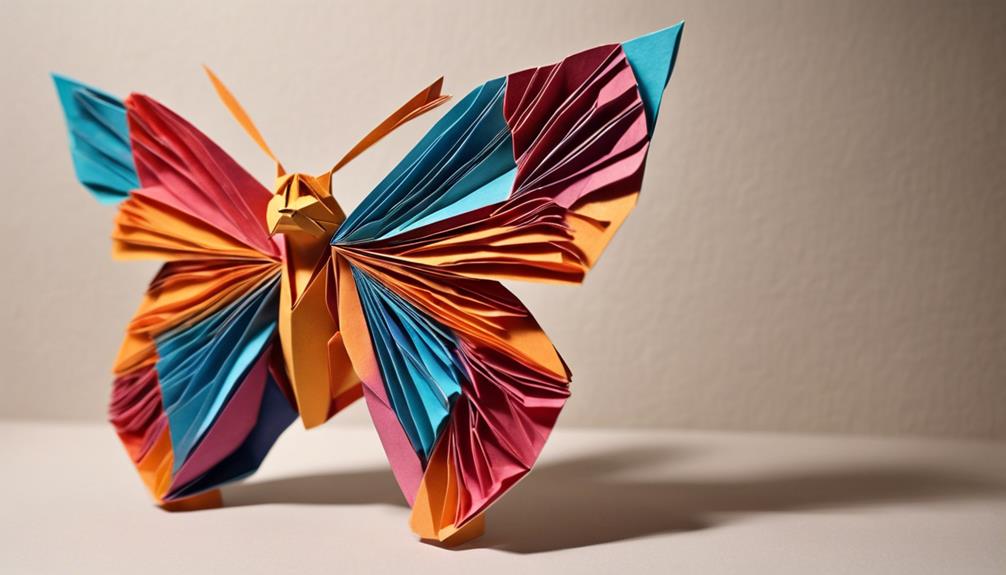European art enthusiasts were captivated by the intricate designs and vibrant colors of Indian art centuries ago. Textiles like chintz, dating back to the 17th century, mesmerized aristocracy and royalty, leading to specialized workshops in Europe replicating Indian patterns. Mughal miniatures depicted detailed royal court scenes, influencing European art with Persian and Mughal fusion. Rajput paintings showcased mythological narratives and spiritual themes, leaving a lasting impression on European audiences. This cross-cultural exchange inspired European artists, like the Pre-Raphaelites, to infuse Indian aesthetics into their works, shaping artistic movements. The enduring impact of Indian art on global art scene emphasizes its profound influence.
Key Takeaways
- Indian textiles like chintz with intricate designs and vibrant colors fascinated Europe in the 17th century.
- Mughal miniatures depicted royal court scenes with Persian and Indian influences, captivating European audiences.
- Rajput paintings portrayed mythological narratives with rich symbolism, leaving a lasting impression on European art.
- Spiritual themes in Indian art conveyed deep Hindu spirituality, influencing European artists.
- The fusion of Indian art styles with European influences inspired the Pre-Raphaelites and Art Nouveau movement.
European Fascination With Indian Art
European art enthusiasts were captivated by Indian art due to its intricate designs and vibrant colors, sparking a trend that influenced fashion and interior decoration. The European fascination with Indian textiles, particularly chintz, dates back to the 17th century when these fabrics became highly coveted in European markets. The intricate patterns and vivid hues of Indian chintz textiles mesmerized the European aristocracy and royalty, leading to the establishment of specialized workshops aimed at replicating these sought-after designs. This craze for Indian textiles not only influenced fashion trends but also left a lasting impact on interior decoration during the 17th and 18th centuries in Europe.
Moreover, European artists and designers drew inspiration from Indian chintz patterns, incorporating them into their own creations. This fusion of Indian artistic elements with European artistry contributed significantly to the Orientalist trend that emerged during this period, symbolizing a deep-seated fascination with the cultural and artistic heritage of India.
The allure of Indian art and textiles in Europe represented exoticism, luxury, and a profound admiration for the artistic traditions of India, shaping the artistic and fashion landscapes of the time.
Mughal Miniatures and Courtly Life

Mughal miniatures, exquisite court paintings from the Mughal Empire in India, depicted intricate scenes of royal courtly life with remarkable attention to detail. These artworks not only showcased the opulence and grandeur of the Mughal courts but also highlighted historical events and royal portraits.
Through a fusion of Persian, Indian, and Mughal artistic styles, these miniatures created engaging visual narratives of the cultural significance and richness of the era.
Intricate Mughal Art
The intricate Mughal art of Mughal miniatures and courtly life captivated audiences with its vibrant colors and meticulous details. Mughal miniature paintings, renowned for their depiction of courtly life, portraits, and scenes from Indian epics, showcased exquisite craftsmanship and rich storytelling. Artists like Basawan and Jagan from the Mughal court masterfully created mesmerizing paintings on various mediums, portraying lavish gardens and royal settings with intricate details. This art form, blending Persian and Indian styles, not only influenced European art but also represented a fusion of cultural and artistic elements that continue to inspire global art enthusiasts. The legacy of Mughal art endures through its historical significance, intricate designs, and the vivid portrayal of the Mughal era's essence.
| Mughal Art Highlights | |
|---|---|
| Exquisite Details | Vibrant Colors |
| Meticulous Craftsmanship | Rich Storytelling |
| Fusion of Cultural Styles | Historical Significance |
Royal Court Depictions
Art enthusiasts marvel at the intricate depictions of royal court scenes and courtly life in Mughal miniatures, capturing the opulence and grandeur of the Mughal courts. These miniatures, created by artists like Basawan and Jagan, showcase a fusion of Persian and Indian art styles, highlighting the cultural richness and sophistication of Mughal society.
Within these miniature paintings, one can observe detailed portrayals of ceremonies, daily activities, and the attire of emperors and their retinue. The Mughal miniatures weren't merely artistic representations but also served as a window into the opulent world of the Mughal courts, attracting the admiration of European collectors.
The vibrant colors, intricate detailing, and narrative storytelling found in these artworks influenced European art, sparking a fascination with Indian aesthetics and culture. Through the lens of Mughal miniatures, the fusion of Persian and Indian artistic traditions found expression, contributing to the broader cultural exchange between East and West during that period.
Cultural Significance Portrayed
Depicting the opulence and grandeur of royal courtly life, Indian miniatures intricately captured the cultural richness and sophistication of Mughal society. These Mughal miniatures served as a proof to the vibrant cultural exchange between India and Europe, influencing European artistry. The intricate details, vibrant colors, and narrative storytelling in these miniatures portrayed Indian courtly life with unparalleled finesse. From the elaborate clothing worn by nobles to the architectural marvels of the Mughal era, these artworks encapsulated the essence of Indian courtly traditions.
The portrayal of opulent courtly life in Mughal miniatures not only fascinated European artists but also inspired them with the exoticism and richness depicted. The influence of Indian art on European artistic expressions can't be underestimated, as these miniatures provided a window into a world of luxury and cultural sophistication previously unseen in European art. Through these exquisite artworks, the Mughal miniatures continue to stand as a proof to the enduring legacy of Indian artistic prowess and cultural significance.
Rajput Paintings and Mythological Narratives

Rajput paintings from India intricately depicted mythological narratives and royal court scenes, showcasing rich colors and detailed patterns that fascinated viewers.
These vibrant artworks often portrayed Hindu epics like the Ramayana and Mahabharata, reflecting a fusion of indigenous Indian styles with Persian and Mughal influences.
Through their intricate detailing and spiritual themes, Rajput art left a lasting impression on European audiences, highlighting the significance of mythological stories and symbolism in these enchanting paintings.
Mythological Rajput Stories
In mythological Rajput stories, vibrant scenes of valor, love, and devotion come alive through intricate detailing and vibrant colors. These Rajput paintings depict narratives from Indian epics like the Ramayana and Mahabharata, showcasing the heroic deeds of Rajput rulers and gods. The art form captures the essence of these mythological tales, emphasizing the cultural and social ethos of the Rajput courts through its storytelling.
Rajput paintings intricately portray the epic battles and noble sacrifices found in the Ramayana and Mahabharata.
The use of vibrant colors and detailed compositions in Rajput art brings to life the emotions and virtues of the characters in these mythological narratives.
Through their art, Rajput painters have played a significant role in preserving and celebrating the rich tradition of Indian mythology, ensuring that these stories endure through generations.
Symbolism in Paintings
Symbolism in the intricate Rajput paintings vividly conveys themes of love, bravery, devotion, and religious stories through rich iconography. Rajput paintings, deeply rooted in mythological narratives, epitomize the fusion of artistry and cultural heritage. These paintings weren't merely decorative; they served as a medium to encapsulate profound narratives and values.
The iconography in Rajput paintings was meticulously crafted to represent intricate details of royal portraits, court scenes, and mythological stories with vibrant colors and meticulous precision.
Through the art of symbolism, Rajput artists showcased a profound connection to nature, spirituality, and the essence of their cultural heritage. Mythological narratives depicted in these paintings, often drawn from epics like the Ramayana and Mahabharata, narrated heroic tales and moral values that were deeply ingrained in the fabric of Indian society.
The symbolic elements in Rajput paintings functioned as a visual language, effectively conveying complex narratives, emotions, and cultural beliefs to the viewers, enriching the artistic experience with layers of meaning and significance.
Spiritual Themes in Indian Art

Spiritual themes in Indian art intricately depict Hindu deities like Vishnu, Shiva, and Devi, embodying diverse aspects of divinity.
- Indian artists: Indian artists have a longstanding tradition of portraying spiritual themes in their art, showcasing a deep connection with Hindu mythology and spirituality.
- Hindu deities: The representation of Hindu deities in Indian art serves not only as a visual depiction but also as a means to convey profound spiritual teachings and values.
- Symbolism: Significance plays an essential role in Indian art, with elements like colors, gestures, and objects carrying deep spiritual meanings that enhance the viewer's understanding of the divine narratives being depicted.
Indian art's portrayal of spiritual themes goes beyond mere aesthetics; it serves as a visual medium for storytelling, moral teachings, and philosophical insights. Through intricate details and symbolic representations, Indian artists convey the essence of Hindu spirituality, inviting viewers to contemplate the mysteries of existence and the interconnectedness of all beings.
Influence on European Artists
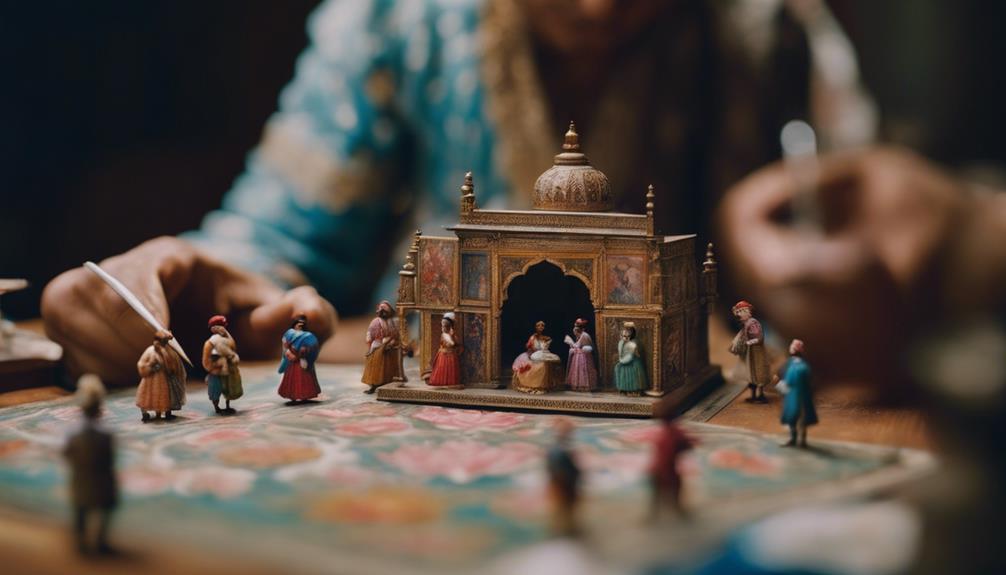
European artists found themselves captivated by the intricate details, vibrant colors, and spiritual themes present in Indian art. The fusion of Indian artistic styles with Persian and Mughal influences inspired European and American painters, shaping the course of art history. The deep connection to nature and spirituality evident in Indian court paintings resonated strongly with European artists, influencing their own interpretations of these themes in their works. This cross-cultural exchange resulted in a rich and diverse artistic landscape, where the mesmerizing qualities of Indian court art, blending reality with decoration, left a lasting impact on European artistic traditions.
| European Artists | Influence of Indian Art |
|---|---|
| Inspired | Fusion of artistic styles |
| Resonated | Spiritual connections |
| Impactful | Rich and diverse art |
Pre-Raphaelites and Indian Art

The Pre-Raphaelites, a group of 19th-century British artists, drew significant inspiration from Indian art and textiles.
- Indian textiles, particularly chintz fabrics, captivated the Pre-Raphaelites due to their vibrant colors and intricate patterns, sparking a fascination with the rich visual tapestry of Indian craftsmanship.
- The incorporation of motifs and designs from Indian art into their paintings by the Pre-Raphaelites showcased a harmonious blend of Eastern and Western artistic styles, illustrating a cross-cultural exchange of creativity.
- Artists like William Morris and Edward Burne-Jones were notable for infusing Indian aesthetics into their works, reflecting the profound influence of Indian art on the Pre-Raphaelite movement and its exploration of beauty beyond traditional Western norms.
The Pre-Raphaelites' embrace of Indian art not only enriched their own artistic expressions but also played a pivotal role in shaping the Orientalist trend in European art and design throughout the Victorian era.
Art Nouveau Movement Connection
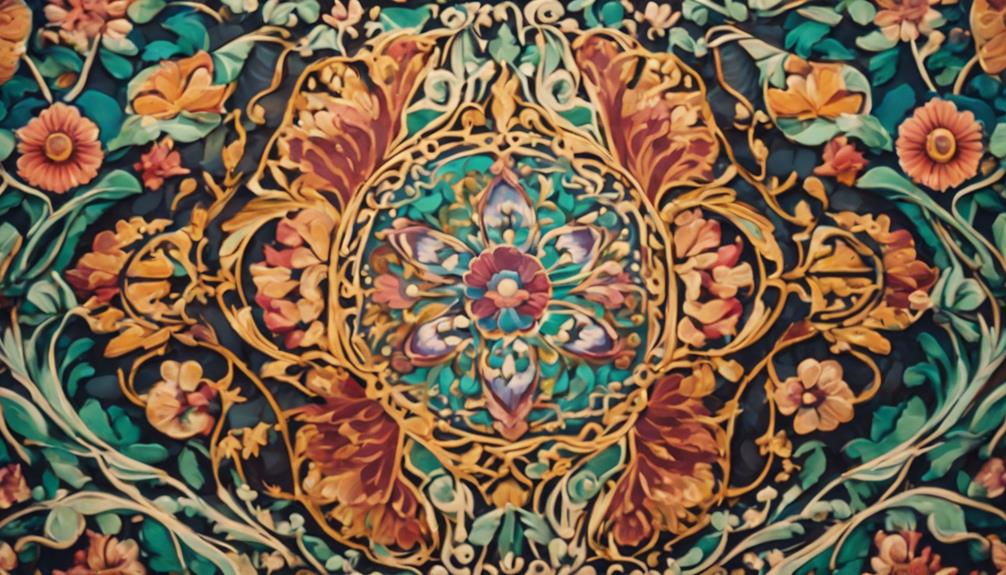
Inspired by the enchanting allure of Indian chintz textiles in Europe, the Art Nouveau movement found artistic resonance in the intricate patterns and vibrant colors that adorned these exotic fabrics. European artists, captivated by the richness and complexity of Indian chintz designs, incorporated elements of these textiles into their own creations, shaping the distinctive aesthetic of Art Nouveau.
The vibrant colors and intricate designs of Indian chintz textiles served as a wellspring of inspiration for Art Nouveau artists, influencing their approach to form and decoration.
The infusion of Indian chintz motifs into the Art Nouveau movement marked a significant cultural exchange, bridging continents and blending artistic traditions. This connection not only enriched the visual language of European art but also highlighted the global interconnectedness of creative expression.
The legacy of this artistic dialogue endures, underscoring the enduring impact of Indian chintz textiles on the evolution of global art.
Enduring Impact on Global Art

Having influenced European and American textiles, Indian chintz textiles continue to shape contemporary global art. The enduring impact of Indian chintz textiles on the art world is undeniable, with contemporary artists drawing inspiration from these historically significant textiles. This influence transcends time and continues to be a driving force in the world of art.
Here are three key ways in which Indian chintz textiles have left their mark on global art:
- Inspiration for Contemporary Artists: Indian chintz textiles have inspired a new generation of artists worldwide, who incorporate elements of these textiles into their modern creations, bridging the gap between traditional art forms and contemporary expressions.
- Cultural Exchange: The popularity of Indian chintz textiles in Europe highlights the profound cultural exchange between India and the Western world, showcasing how art can transcend geographical boundaries and time periods.
- Legacy in Global Art: Indian chintz textiles have established a lasting legacy in the global art scene, emphasizing the enduring impact of Indian art on a worldwide scale.
Frequently Asked Questions
What Kind of Influence Did the Europeans Have on Indian Paintings?
Europeans influenced Indian paintings through a cultural exchange that introduced new artistic techniques and styles. European artists brought perspectives on realism and perspective that impacted Indian court painters, leading to a fusion of artistic elements.
This exchange resulted in a blend of intricate details and vibrant colors in Indian art, reflecting a cross-pollination of ideas and techniques. The influence of Europeans on Indian paintings showcased a dynamic evolution in artistic expression and style.
What Is the Famous Ancient Art in India?
Ancient India is known for a myriad of art forms, with one of the most famous being Madhubani paintings. Originating from the Mithila region, these intricate artworks feature colorful designs depicting nature, mythology, and daily life. Created with natural pigments and often on walls or paper, Madhubani paintings showcase the rich cultural heritage and artistic talent of India.
They continue to be admired for their unique style and storytelling elements, engaging art enthusiasts worldwide.
How Did Indian Artists Come Under the Influence of European Style of Painting in British Period?
During the British period, Indian artists came under the influence of European style of painting through colonial interactions and exposure to Western art techniques.
This blending of Indian and European painting styles resulted in unique artistic expressions reflecting cultural exchange. The demand for hybrid artworks by British patrons created a market for art that combined elements of both traditions.
Indian artists incorporated Western perspectives and techniques while retaining their cultural motifs, leading to a fusion of artistic influences.
Which Paintings Showed the Social Life of Europeans in India Are Called?
Paintings depicting the social life of Europeans in India are known as 'Company School' paintings. Emerging in the 18th and 19th centuries, these artworks portrayed daily life, landscapes, and cultural interactions in India.
Commissioned by British East India Company officials and traders, Company School paintings offer a fusion of Indian and European artistic styles. They serve as historical records of colonial encounters, providing insights into the social dynamics of that era.
Conclusion
To sum up, the mesmerizing Indian art that enthralled Europe centuries ago continues to inspire and influence artists worldwide.
From Mughal miniatures to Rajput paintings, the spiritual themes and mythological narratives depicted in Indian art have left a lasting impact on global artistic expression.
The connection between European artists, such as the Pre-Raphaelites, and the Art Nouveau movement, demonstrates the enduring legacy of Indian art on the world stage.
